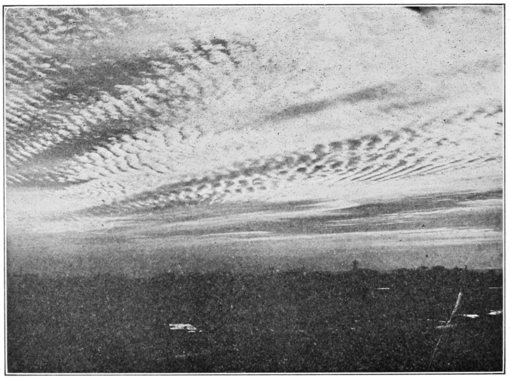| HOLES IN THE AIR |
By W. J. HUMPHREYS, Ph.D.
PROFESSOR OF METEOROLOGICAL PHYSICS, U. S. WEATHER BUREAU, WASHINGTON, D. C.
THE bucking and balking, the rearing, plunging and other evidences of the mulish nature of the modern Pegasus soon inspired aerial jockeys to invent picturesque terms descriptive of their steeds and of the conditions under which their laurels were won or lost. One of the best of these expressions, one that is very generally used and seems to be a permanent acquisition, is "holes in the air." There are, of course, no holes in the ordinary sense of the term in the atmosphere—no vacuous regions—but the phrase "holes in the air" is brief and elegantly expressive of the fact that occasionally at various places in the atmosphere there are conditions which, so far as flying is concerned, are mighty like unto holes. Such conditions are indeed real, and it is the purpose of this paper to point out what some of them are, when and where they are most likely to occur and how best to avoid them.
Suppose for a moment that there was a big hole in the atmosphere, a place devoid of air and of all pressure. The surrounding air would rush in to fill this space with the velocity pertaining to free particles of the atmosphere at the prevailing temperature; that is to say, at the

